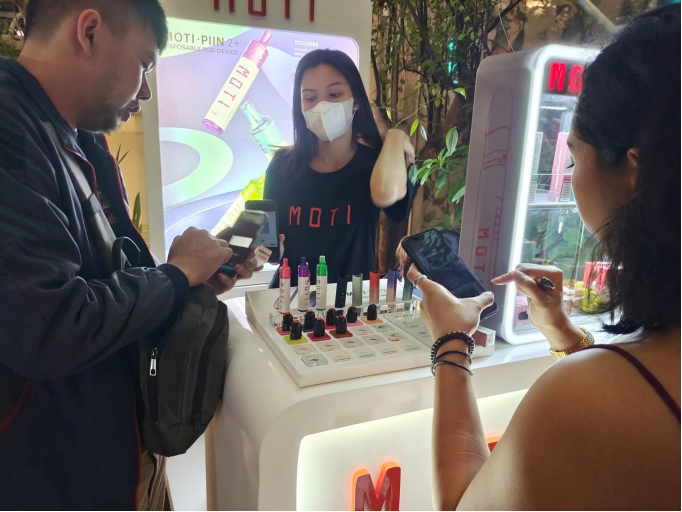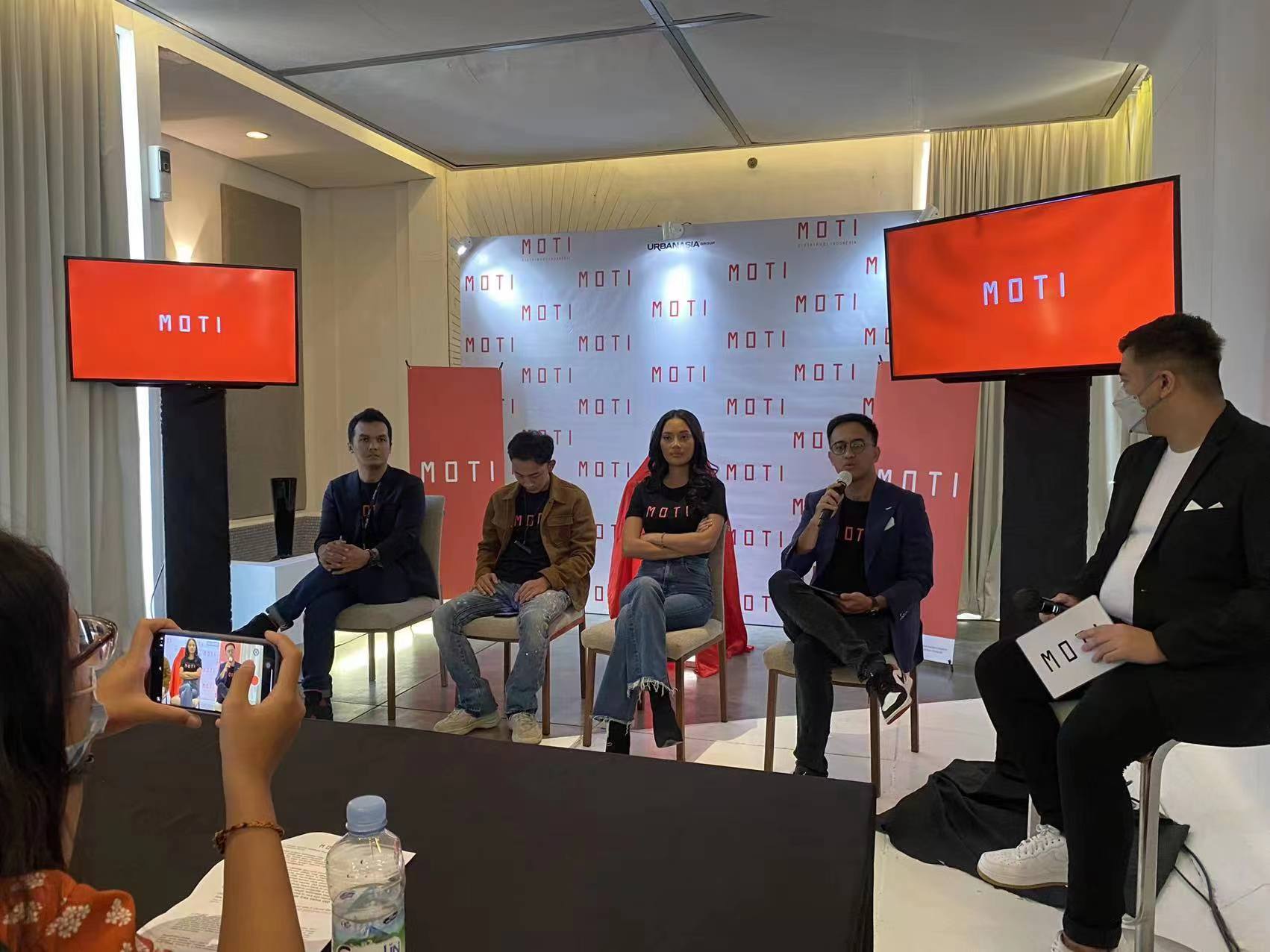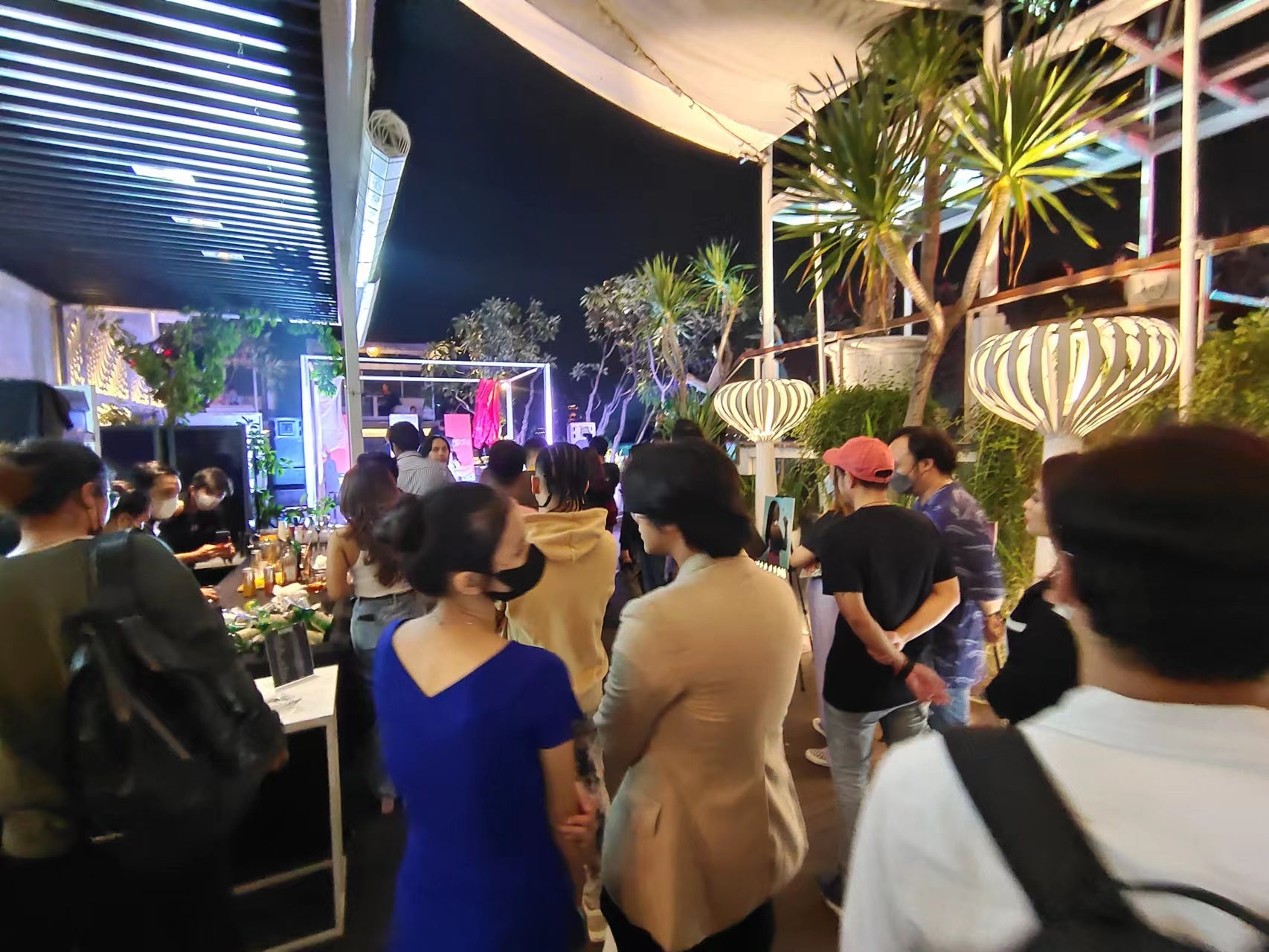MOTI PLANET
Postman
- Joined
- Aug 25, 2022
- Messages
- 161
The operating income of the cigarette industry reached 24.86 billion US dollars. The market potential of electronic cigarettes is huge.
Indonesia is an important global cigarette market and one of the major tobacco-producing countries, and its economy is highly dependent on the tobacco industry. It is predicted that the operating income of the country's cigarette industry will reach 24.86 billion US dollars in 2022, an increase of 5.8% over 2021. Next, let's take a look at the development of this important tobacco consumption market.
The tobacco industry has a far-reaching influence in Indonesia

Since the 19th century, tobacco cultivation and consumption have taken root in this country. The tobacco market in Indonesia is different from other countries. It is dominated by clove cigarettes. The annual sales of clove cigarettes account for about 95% of the annual sales of all cigarettes in Indonesia. Although local tobacco consumption has been decreasing in recent years, Indonesians will still smoke up to 300.2 billion cigarettes in 2019. About 75% of Ding cigarettes in the country are machine-made cigarettes, and the rest are hand-rolled, have one of the highest smoking rates in the world, and smoking is very common in Indonesia. According to a survey conducted in 2018, the number of cigarette consumers in the country is nearly 100 million. Smoking is the living habit of many local people. 62.9% of men smoke, while 4.8% of women smoke. There is no minimum age limit for consumers to buy cigarettes in Indonesia. It is very common to sell cigarettes by piece. According to the data of the Ministry of Health, 33.8% of adolescents under 15 years old smoked in 2018, compared with 32.8% in 2016.
COVID-19 and the rise in cigarette taxes have pushed local cigarette consumers to lowelower-endducts. Many tobacco companies have introduced cigarettes with smaller packaging specifications to meet the needs of Indonesian consumers. This situation also increases the demand in the local tobacco market for clove cigarettes with high tar content.

Five leading cigarette makers in Indonesia
According to the data of "The Southeast Asia Tobacco Control Association", in 2020, five tobacco companies controlled almost 90% of the Indonesian cigarette market.
Sampoerna takes the lead with 32.5% market share, followed by Gudang Garam Group with 27.5% market share, Djarum with 18.7% market share, Bentoel with 8% market share, and Indonesian Tobacco with 3% market share, The remaining 10.3% market share is shared by about 500 small and medium-sized tobacco manufacturers.
According to the information of the Indonesian Development Foundation, the tobacco industry is important in Indonesia, providing employment for 5.98 million Indonesians, of whom 4.28 million work in cigarette manufacturing and sales enterprises, and 1.7 million are engaged in tobacco planting. In 2019, the number of employees in tobacco manufacturing enterprises accounted for 0.34% of the total employment in the country. Like many tobacco-growing countries, tobacco is mainly grown by tobacco farmers, who rely on tobacco for their livelihood. In addition, the local tobacco industry needs to work hard to solve the problem of child labor.
Decentralized decision-making leads to a lack of continuity of policies
Since the tobacco industry plays a very important role in Indonesia's national economy, Indonesia has always been cautious about tobacco control. Indonesia is also one of the few countries in the world that have not formally acceded to the WHO Framework Convention on Tobacco Control. Indonesia's responsibility for tobacco policy is divided among the President's Office, six national ministries, and one independent agency. Decentralized decision-making leads to the fragmentation of policies and a lack of continuity.
Nevertheless, Indonesia has made some progress in tobacco control. Since 2014, the country has required cigarette manufacturers to print health warnings on the front and back of cigarette packs, with warning coverage accounting for 40% of the area of cigarette packs. At the same time, they have implemented smoking bans in some places, including public transport places, medical care places, and educational institutions. Indonesia also has some restrictions on broadcasting tobacco advertisements on television and radio.
Although the cigarette tax has been raised many times, the domestic cigarette price in Indonesia is still the lowest in the Asia Pacific region, and the tobacco tax is far lower than the standard proposed by the World Health Organization. Indonesia's tobacco tax system is very complex. At present, Indonesia divides the cigarette tax rate into 10 levels according to the type, quantity, and price of tobacco products. So many levels are set up to protect smaller tobacco manufacturers and domestic jobs from the competition.

According to the "Tobacco Roadmap" planned by the Indonesian government in 2017, the number of tobacco tax levels is expected to be reduced, but this plan was subsequently withdrawn. In November 2018, the Ministry of Economic Affairs Coordination the country launched a new "tobacco roadmap", emphasizing the importance of the tobacco industry and advocating that the protection of the tobacco industry should last until 2025.

Taxes on all types of cigarettes are increasing
On January 1, 2022, Indonesia will increase taxes on all types of cigarettes by an average of 12%, and reduce the number of tax levels from 10 to 8. According to the Ministry of Finance of Indonesia, the tax reform aims to meet the growing medical and health care costs. The rising smoking rate has led to an increase in this cost. At the same time, it is to further reduce the smoking rate of teenagers.
The supervision of new tobacco products is not perfect
In Indonesia, electronic cigarettes are more popular than heated cigarettes. Because electronic cigarettes were launched in Indonesia earlier than heated cigarettes, electronic cigarettes were launched in Indonesia in 2010, while heated cigarettes were launched in Indonesia in 2019. According to the research of the Indonesia Development Foundation, there will be about 2.2 million e-cigarette consumers in the country in 2022.

In 2022, there will be about 2.5 million e-cigarette consumers in the country
The Indonesian government divides non-cigarette tobacco products into other tobacco processing products. These products include snuff, chewing tobacco, electronic cigarettes, and heated cigarettes. All other tobacco-processed products are taxed at a rate of 57 percent.
The Indonesian Development Foundation believes that the Indonesian government should levy lower taxes on new tobacco products than on combustible tobacco products, and should improve the purchasing power and convenience of Indonesian consumers on new tobacco products.
In addition to the provisions on import and consumption tax, Indonesia has not yet issued specific and comprehensive regulations on new tobacco products. Different regulatory agencies have different attitudes toward new tobacco products, and relevant policies have not been fully coordinated. Indonesian food and drug regulators want to ban e-cigarettes, but the Indonesian Ministry of Health wants to regulate e-cigarettes like traditional tobacco products.

In low and middle-income countries, purchasing power is a challenge to the development of new tobacco products. Harris Siajian of the Indonesian Development Foundation believes that new tobacco products will succeed in the Indonesian market. He said: "Indonesia has a total population of more than 200 million, including about 52 million educated middle-class people. In the past 20 years, many poor people have achieved a major transformation and entered the ranks of the educated middle class. This is a good opportunity for the development of new tobacco products. The Indonesian middle class has always been an important driving force for the country's economic development. Since 2002, the consumption level of this part of the group has been growing every year A suitable brand ambassador, product convenience, and purchasing power play a very important role in the success of the sales of new tobacco products.
Indonesia is an important global cigarette market and one of the major tobacco-producing countries, and its economy is highly dependent on the tobacco industry. It is predicted that the operating income of the country's cigarette industry will reach 24.86 billion US dollars in 2022, an increase of 5.8% over 2021. Next, let's take a look at the development of this important tobacco consumption market.
The tobacco industry has a far-reaching influence in Indonesia

Since the 19th century, tobacco cultivation and consumption have taken root in this country. The tobacco market in Indonesia is different from other countries. It is dominated by clove cigarettes. The annual sales of clove cigarettes account for about 95% of the annual sales of all cigarettes in Indonesia. Although local tobacco consumption has been decreasing in recent years, Indonesians will still smoke up to 300.2 billion cigarettes in 2019. About 75% of Ding cigarettes in the country are machine-made cigarettes, and the rest are hand-rolled, have one of the highest smoking rates in the world, and smoking is very common in Indonesia. According to a survey conducted in 2018, the number of cigarette consumers in the country is nearly 100 million. Smoking is the living habit of many local people. 62.9% of men smoke, while 4.8% of women smoke. There is no minimum age limit for consumers to buy cigarettes in Indonesia. It is very common to sell cigarettes by piece. According to the data of the Ministry of Health, 33.8% of adolescents under 15 years old smoked in 2018, compared with 32.8% in 2016.
COVID-19 and the rise in cigarette taxes have pushed local cigarette consumers to lowelower-endducts. Many tobacco companies have introduced cigarettes with smaller packaging specifications to meet the needs of Indonesian consumers. This situation also increases the demand in the local tobacco market for clove cigarettes with high tar content.

Five leading cigarette makers in Indonesia
According to the data of "The Southeast Asia Tobacco Control Association", in 2020, five tobacco companies controlled almost 90% of the Indonesian cigarette market.
Sampoerna takes the lead with 32.5% market share, followed by Gudang Garam Group with 27.5% market share, Djarum with 18.7% market share, Bentoel with 8% market share, and Indonesian Tobacco with 3% market share, The remaining 10.3% market share is shared by about 500 small and medium-sized tobacco manufacturers.
According to the information of the Indonesian Development Foundation, the tobacco industry is important in Indonesia, providing employment for 5.98 million Indonesians, of whom 4.28 million work in cigarette manufacturing and sales enterprises, and 1.7 million are engaged in tobacco planting. In 2019, the number of employees in tobacco manufacturing enterprises accounted for 0.34% of the total employment in the country. Like many tobacco-growing countries, tobacco is mainly grown by tobacco farmers, who rely on tobacco for their livelihood. In addition, the local tobacco industry needs to work hard to solve the problem of child labor.
Decentralized decision-making leads to a lack of continuity of policies
Since the tobacco industry plays a very important role in Indonesia's national economy, Indonesia has always been cautious about tobacco control. Indonesia is also one of the few countries in the world that have not formally acceded to the WHO Framework Convention on Tobacco Control. Indonesia's responsibility for tobacco policy is divided among the President's Office, six national ministries, and one independent agency. Decentralized decision-making leads to the fragmentation of policies and a lack of continuity.
Nevertheless, Indonesia has made some progress in tobacco control. Since 2014, the country has required cigarette manufacturers to print health warnings on the front and back of cigarette packs, with warning coverage accounting for 40% of the area of cigarette packs. At the same time, they have implemented smoking bans in some places, including public transport places, medical care places, and educational institutions. Indonesia also has some restrictions on broadcasting tobacco advertisements on television and radio.
Although the cigarette tax has been raised many times, the domestic cigarette price in Indonesia is still the lowest in the Asia Pacific region, and the tobacco tax is far lower than the standard proposed by the World Health Organization. Indonesia's tobacco tax system is very complex. At present, Indonesia divides the cigarette tax rate into 10 levels according to the type, quantity, and price of tobacco products. So many levels are set up to protect smaller tobacco manufacturers and domestic jobs from the competition.

According to the "Tobacco Roadmap" planned by the Indonesian government in 2017, the number of tobacco tax levels is expected to be reduced, but this plan was subsequently withdrawn. In November 2018, the Ministry of Economic Affairs Coordination the country launched a new "tobacco roadmap", emphasizing the importance of the tobacco industry and advocating that the protection of the tobacco industry should last until 2025.

Taxes on all types of cigarettes are increasing
On January 1, 2022, Indonesia will increase taxes on all types of cigarettes by an average of 12%, and reduce the number of tax levels from 10 to 8. According to the Ministry of Finance of Indonesia, the tax reform aims to meet the growing medical and health care costs. The rising smoking rate has led to an increase in this cost. At the same time, it is to further reduce the smoking rate of teenagers.
The supervision of new tobacco products is not perfect
In Indonesia, electronic cigarettes are more popular than heated cigarettes. Because electronic cigarettes were launched in Indonesia earlier than heated cigarettes, electronic cigarettes were launched in Indonesia in 2010, while heated cigarettes were launched in Indonesia in 2019. According to the research of the Indonesia Development Foundation, there will be about 2.2 million e-cigarette consumers in the country in 2022.

In 2022, there will be about 2.5 million e-cigarette consumers in the country
The Indonesian government divides non-cigarette tobacco products into other tobacco processing products. These products include snuff, chewing tobacco, electronic cigarettes, and heated cigarettes. All other tobacco-processed products are taxed at a rate of 57 percent.
The Indonesian Development Foundation believes that the Indonesian government should levy lower taxes on new tobacco products than on combustible tobacco products, and should improve the purchasing power and convenience of Indonesian consumers on new tobacco products.
In addition to the provisions on import and consumption tax, Indonesia has not yet issued specific and comprehensive regulations on new tobacco products. Different regulatory agencies have different attitudes toward new tobacco products, and relevant policies have not been fully coordinated. Indonesian food and drug regulators want to ban e-cigarettes, but the Indonesian Ministry of Health wants to regulate e-cigarettes like traditional tobacco products.

In low and middle-income countries, purchasing power is a challenge to the development of new tobacco products. Harris Siajian of the Indonesian Development Foundation believes that new tobacco products will succeed in the Indonesian market. He said: "Indonesia has a total population of more than 200 million, including about 52 million educated middle-class people. In the past 20 years, many poor people have achieved a major transformation and entered the ranks of the educated middle class. This is a good opportunity for the development of new tobacco products. The Indonesian middle class has always been an important driving force for the country's economic development. Since 2002, the consumption level of this part of the group has been growing every year A suitable brand ambassador, product convenience, and purchasing power play a very important role in the success of the sales of new tobacco products.








